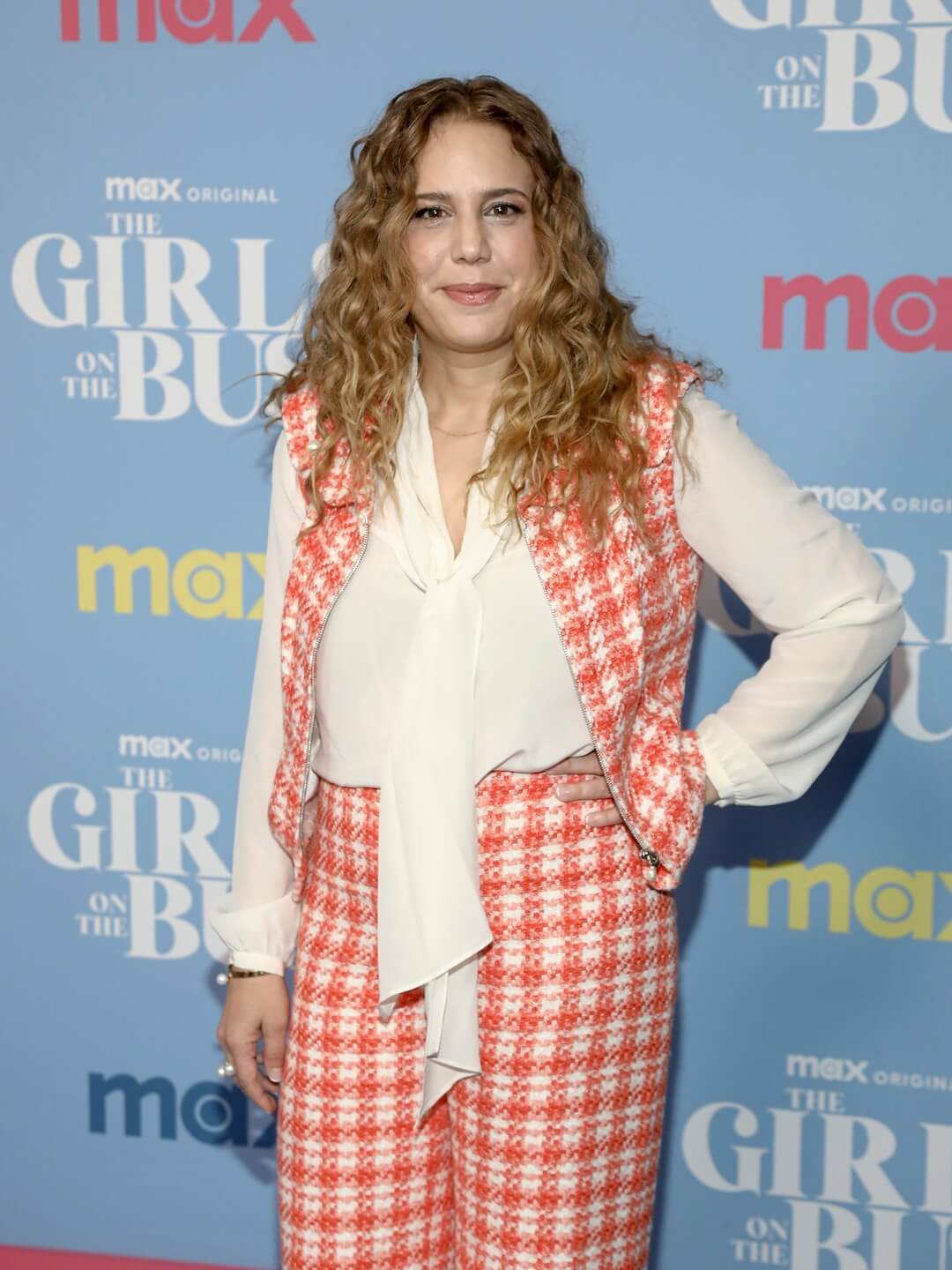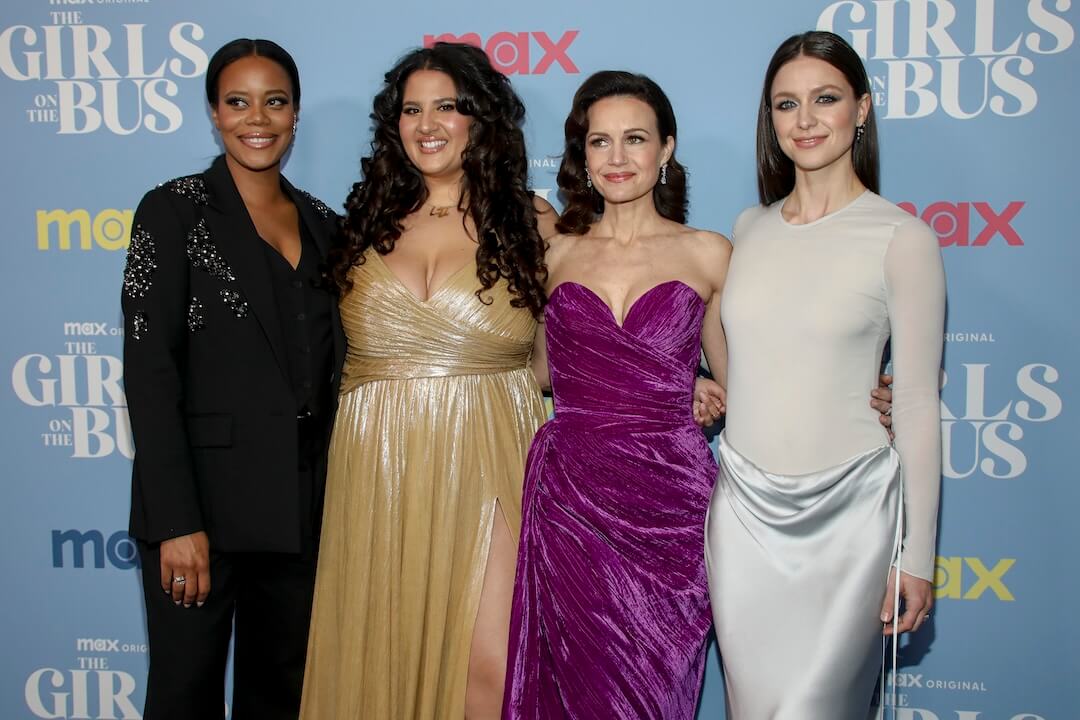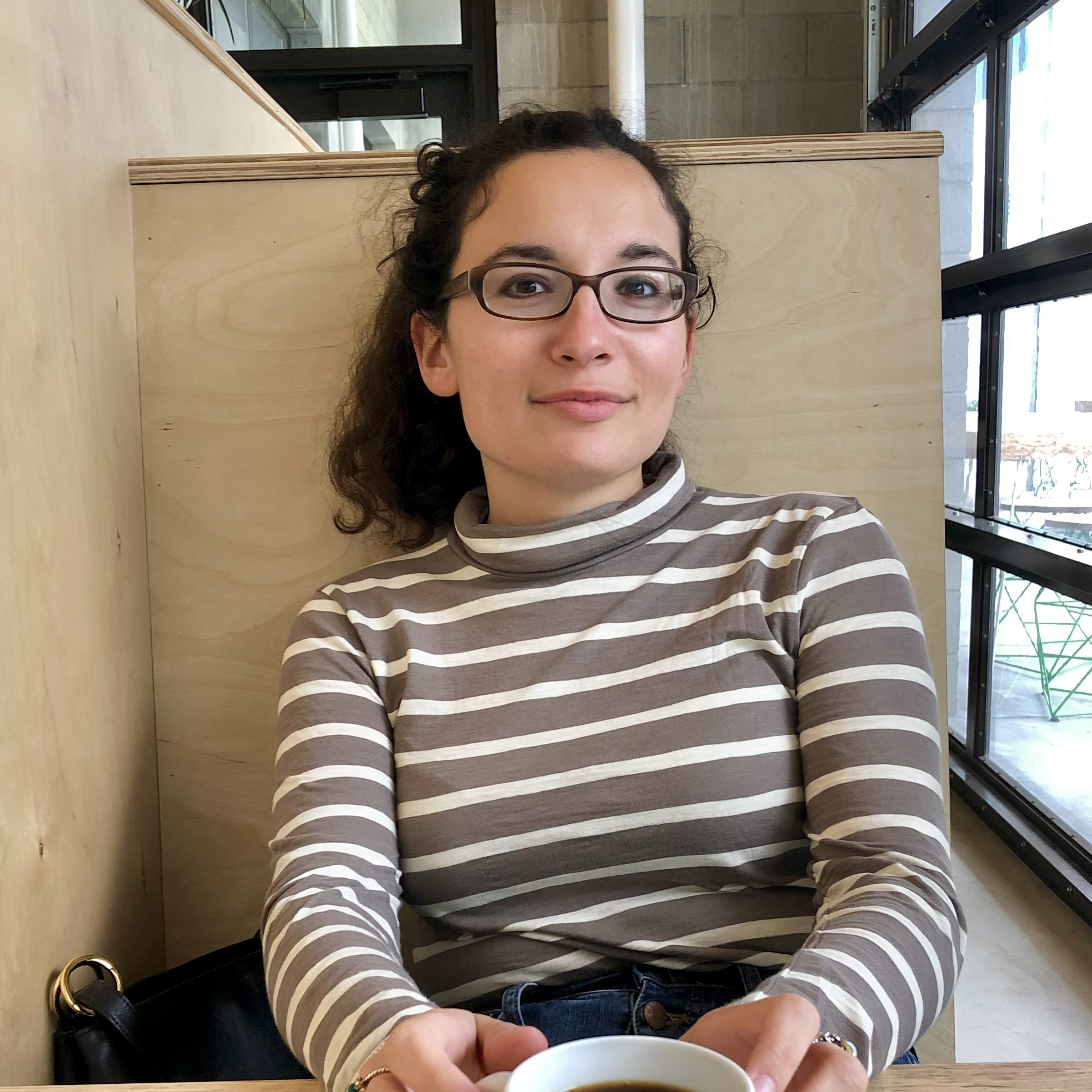Journalists tend to enter their careers with the most idealistic of ambitions. There are no beckoning promises of high salaries or luxurious offices or even job stability. What remains, what calls to us, really, is the expectation of doing good and important work for an audience.
It only follows then that journalists love to see their initial dreams reflected on screen, in part because it represents a utopian ideal of what journalism could be and in part because, well, a journalist’s job is eternal fodder for entertainment.
A new female-focused entry has joined this list: “The Girls on the Bus.” Inspired by former New York Times reporter Amy Chozick’s 2018 memoir “Chasing Hillary: Ten Years, Two Presidential Campaigns and One Intact Glass Ceiling” about her experiences covering Hillary Clinton’s presidential campaigns in 2008 and 2016, the show is set on the campaign trail — on the literal campaign bus — as a disparate group of female journalists is bound together by only one commonality: an assignment.
The four lead characters represent archetypal journalistic roles: the “Scoop Queen,” Grace, who works at a Washington Post-esque newspaper, per Chozick, and holds perhaps the most traditional idea of journalism; Sadie, the ambitious young reporter who wants the story but can’t help getting a little emotionally invested; Kimberlyn, a Black journalist for a conservative, Fox News-like TV outlet who struggles to balance personal commitments with the importance of her job; and Lola, the Gen Z-er who helps maintain her Substack and newsy TikToks with brand deals for sponsored content.
The women, inevitably, become friends while also chafing against their respective differences. We’re on the campaign trail, so there are presidential hopefuls — a folksy Kansas mayor, the promising female candidate who lost last cycle — but it’s clear which characters take the center stage: our journalists.
Poynter sat down with Chozick in advance of the show’s Thursday season finale on HBO streaming service Max to discuss how fact differs from fiction, any journalism misconceptions she was sure not to repeat and what orients “The Girls on the Bus” squarely in today’s media environment — and not 2016’s. This interview has been lightly edited for brevity and clarity.

Series creator Amy Chozick attends the premiere of Max’s “The Girls on the Bus” at the DGA New York Theater on Tuesday, March 12, 2024, in New York. (Photo by Andy Kropa/Invision/AP)
Elizabeth Djinis: I know the show is loosely based on your memoir, but I’m wondering if we can start by talking about how much you think it preserves and in which ways it departs from your book.
Amy Chozick: In terms of the reporters, we knew we wanted to cover vastly different backgrounds — intergenerational, different political beliefs, and it was really important that they had different journalistic philosophies. We wanted to get into these debates that the younger generation questions objectivity versus a reporter like Carla Gugino’s character, Grace, who doesn’t vote in the elections she covers or show even a hint of bias. These are real debates happening in newsrooms and it was really fun to put them in our characters’ mouths.
Even when we started dreaming up the show in 2019, we knew we wanted some kind of influencer on the road, but by the time the show shot in 2022 and 2023, the Lola character was even more realistic. Content creators were driving the news, particularly for young readers getting all their news from TikTok. We took a big swing putting her on the bus, and I don’t think we would have the word Substack in 2019. In 2023, she’s supporting herself with Substack.
Djinis: You’ve said it was very important to you not to have any of the journalist characters sleep with a source. Were there other journalism misconceptions you wanted to make sure the show didn’t portray?
Chozick: That was a big one. Of course, I think people in Washington have complicated romantic entanglements, but the trope we wanted to avoid was a female journalist sleeping with a source to get a story. Really, it was more about the tone — I think there are a lot of journalism movies and TV shows about speaking truth to power. There’s a place for that, but I wanted these women to seem really human and really messy. I think it’s really hard what they do — these campaign reporters are leaving their families and spending months on end living out of a suitcase and their personal lives are complete dumpster fires. It’s not always pretty or neat or righteous — sometimes you’re just hitting someone up in a hotel bar and gossiping a little. To an outsider, it could seem unseemly the way stories come together — it isn’t always this pursuit of truth.
Djinis: This is a female-driven show led in large part by women. I’m curious what you think is the importance of having female characters created by women, particularly as it relates to journalism. I was struck, for example, by Sadie’s relationship with her editor, which I definitely recognized.
Chozick: We didn’t think about it, but it was a show entirely made by women, so it was really special. We shot in Brooklyn, and our stages were so small that it was almost like a bus. The ability to do an abortion road trip in the show’s eighth episode was really important to my partner, executive producer and showrunner Rina Mimoun, and I do think there is a way into stories and politics and in television that women just inherently bring something different to. These are all women dealing with their own ambitions and covering the most ambitious woman in the world trying to be the first female president. I think a woman automatically frames it in a different way.
Djinis: I was really fascinated by the characters of Lola and Kimberlyn, because they seem to, quite obviously, represent opposite ends of the spectrum of journalists ideologically — the progressive, very digital journalist and the old guard, conservative journalist. They strike up a friendship on the show, but I’m curious how realistic you think that would be in real life.
Chozick: I think if they knew each other online, they would never see eye-to-eye. But imagine being forced on a bus together for a year, sleeping in the same hotels, eating in the same breakfast buffets, frustrated by the same candidate. I think the bus really provided those moments — it’s like those first seasons of “The Real World.” Being stuck together forces these women’s walls to come down and to see each other as human. It happened on the campaign trail. You think, she’s my competitor and I’m not going to talk to her, and then you’re talking about your wedding together at two in the morning on a bus in Ohio.
Djinis: It goes without saying that it’s become increasingly difficult to be a journalist since 2016, for political and economic reasons. Did you feel it was important for the show to reflect the economic reality of journalism right now? Why or why not?
Chozick: It’s gotten bleaker since we shot the show. But we were inspired by “Almost Famous” — I wanted journalism to look really cool and fun. I remember when I was getting into journalism 20 years ago — people were saying, “Didn’t the Internet kill newspapers?” and telling me that the industry was dying. I would love for people to see this show, especially young people, and think: It looks like a fun career. It’s a front seat of history, and there’s nothing like that. That’s the way we wanted to address the dark state of the industry, hearing about layoffs in the show. I just wanted it to seem like this is a very cool and important job, and you get to do things that nobody else gets to do.
Djinis: I feel like all of us in journalism have these sort of Aaron Sorkin-esque moments when we watch journalism shows, a sort of aha realization of “that’s why I’m in this profession.” I did feel proud to be a journalist when I watched this show. Is there a moment for you like that in this show? What would it be?
Chozick: I’m really proud of the finale — we recreated a Democratic National Convention with a 100,000-balloon drop. I had cameos from Jennifer Palmieri, former White House Director of Communications under Barack Obama and Hillary Clinton’s 2016 campaign communications director, and Eric Schultz, deputy White House press secretary under Obama. I remember being in that setting — it felt like a convention and we had 700 extras as delegates. It was crazy. I texted executive producer Greg Berlanti and said, “This feels like a peak life experience.” I rewrote the ending to the Democratic National Convention, and that certainly felt really special to me.
There’s also a scene — you’ll know it when you see it — between Sadie and the female candidate alone on her campaign bus. Obviously, I never got that close to speaking to Hillary, but it was very cathartic to create those conversations you wish you had as a journalist.







